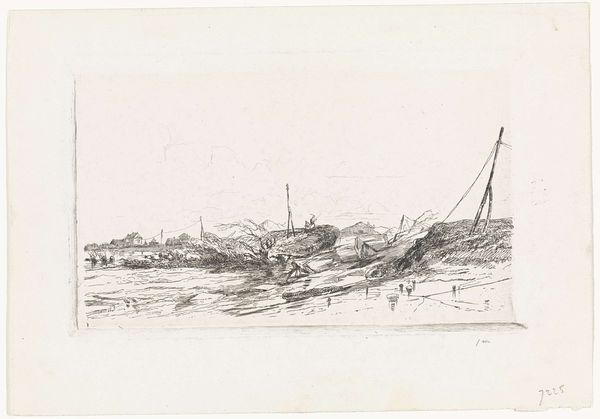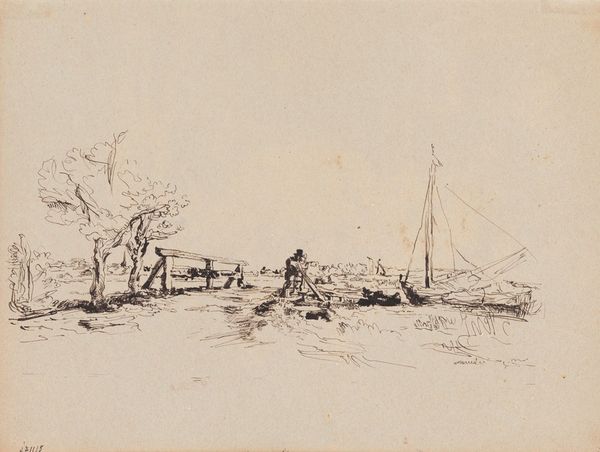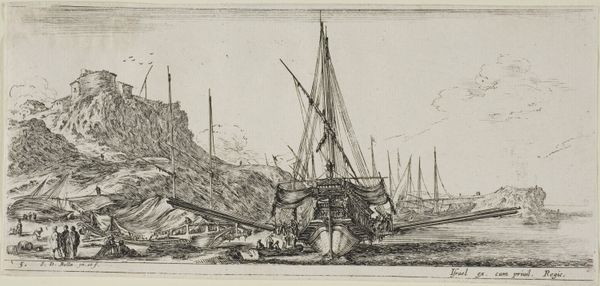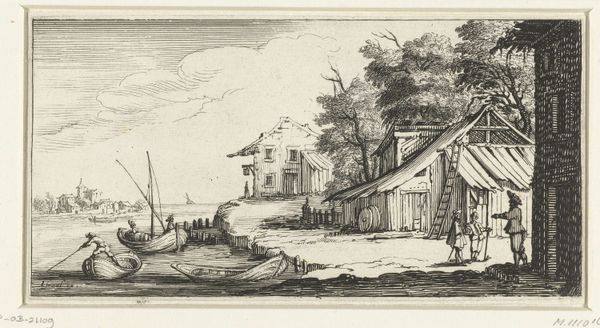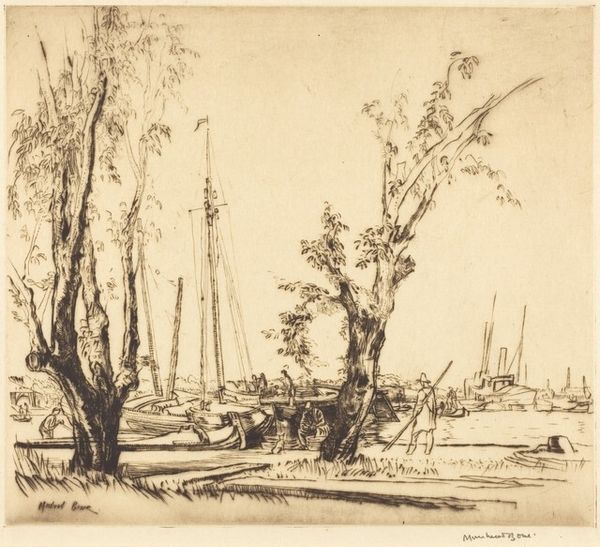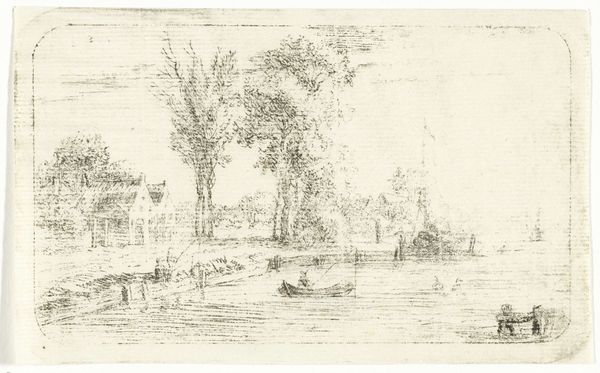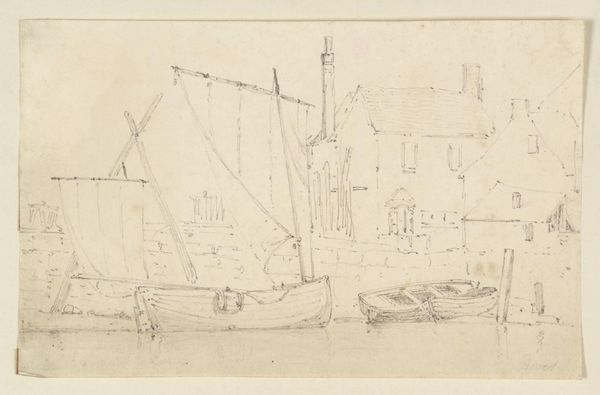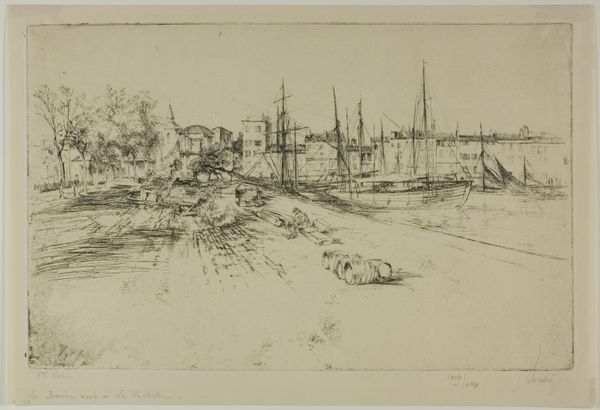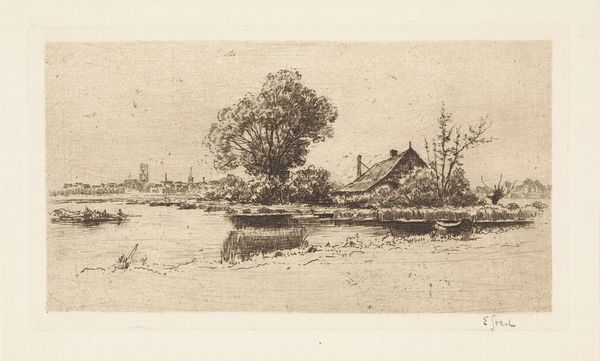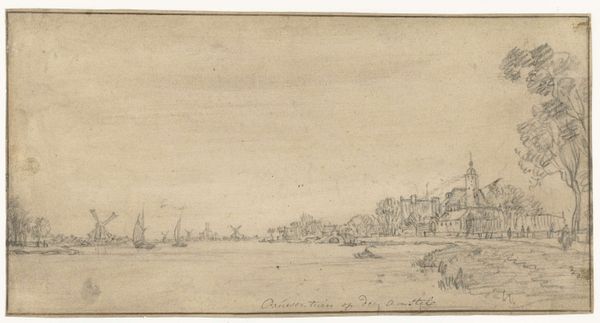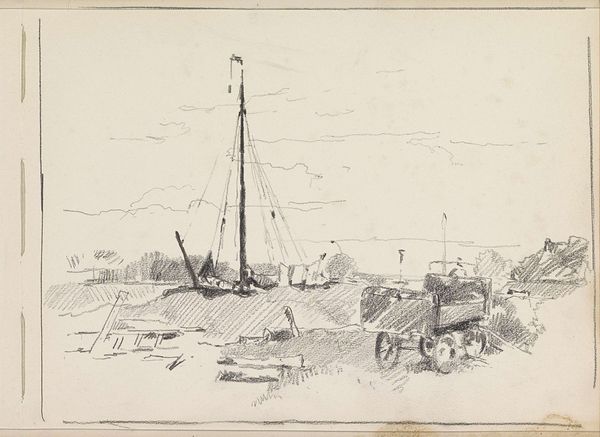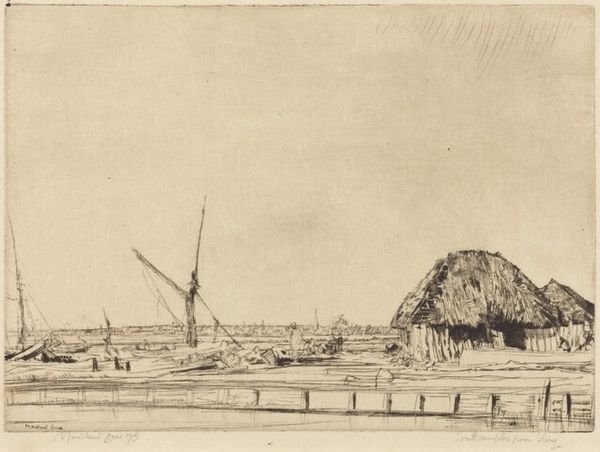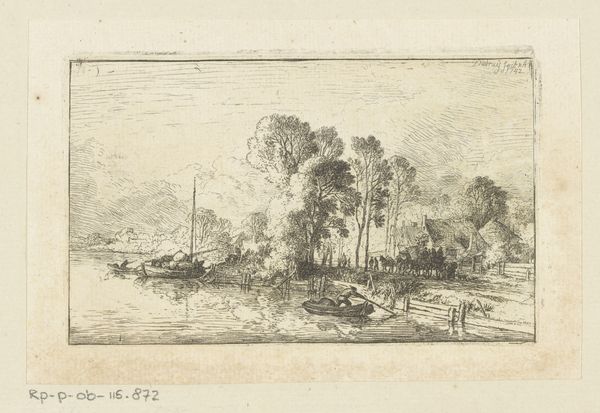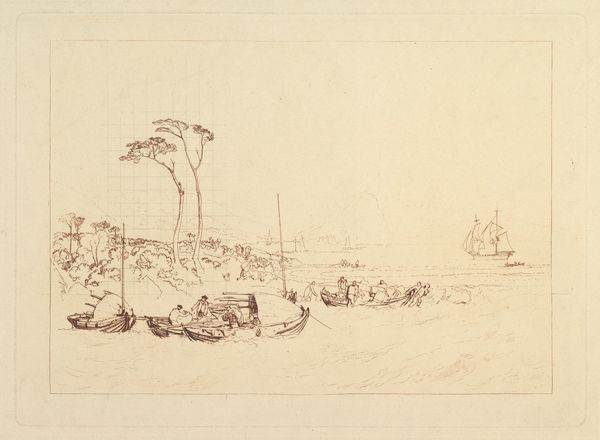
Copyright: National Gallery of Art: CC0 1.0
Editor: This is André Dunoyer de Segonzac’s "Harbor, Saint-Tropez," an etching from 1927. It's incredibly detailed, especially considering it’s a print. I’m struck by the contrast between the busy harbor scene and the quiet figure sitting near the water's edge. What do you make of this etching? Curator: The material process is key here. Think about the labor involved in creating an etching like this in 1927. The artist meticulously incising the image into a metal plate, the repeated dipping in acid, the skilled printing process… it speaks volumes about value assigned to artistic skill versus mass production. Notice how the artist doesn't shy away from depicting labor - we see the boats, evidence of fishing, and someone sitting at the water's edge, maybe taking a break from some work. Editor: That’s a good point. The actual act of *making* the print becomes part of its meaning. I hadn’t really considered the implications of etching specifically. Is it then a commentary on industrialization at all? Curator: Perhaps a subtle one. Etching as a printmaking technique offered a means of reproduction but still required a high level of artistry and technical skill, which you might consider as distinct from mechanical modes of production. The rough lines almost romanticize handcraft compared to clean lines that technology produces, no? Editor: Definitely. It almost feels like a rejection of purely mechanical creation. Are we also meant to reflect upon who the work might have been made for, who could afford it? Curator: Precisely. Prints often democratized art, making images accessible to a wider audience than unique paintings. Reflect upon the class dynamics: a scene depicting workers, but possibly purchased by a middle-class collector eager to experience a vision of labor and the ‘authentic’. What did capturing Saint Tropez, specifically, represent to this population? Editor: That reframing changes my view entirely. Thank you, I now see beyond just the aesthetics to a much more complex interplay of labor, value, and class. Curator: It is rewarding to trace how the tangible elements intersect with societal undertones; materiality isn’t divorced from how value is understood.
Comments
No comments
Be the first to comment and join the conversation on the ultimate creative platform.
